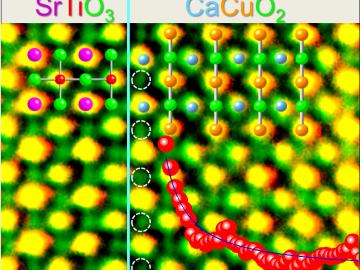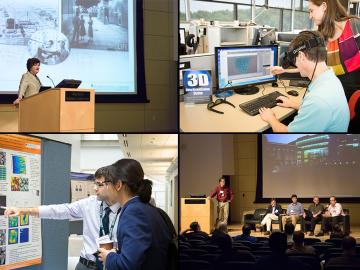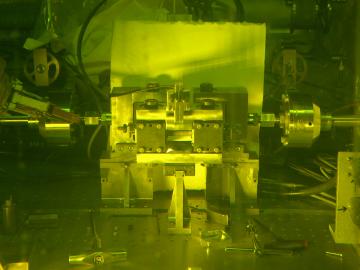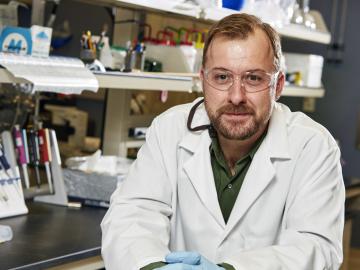
Filter News
Area of Research
- (-) Materials (122)
- (-) Materials for Computing (13)
- Advanced Manufacturing (5)
- Biological Systems (1)
- Biology and Environment (102)
- Biology and Soft Matter (4)
- Building Technologies (2)
- Chemical and Engineering Materials (3)
- Chemistry and Physics at Interfaces (7)
- Clean Energy (168)
- Climate and Environmental Systems (7)
- Computational Biology (1)
- Computational Chemistry (5)
- Computational Engineering (1)
- Computer Science (3)
- Data (1)
- Earth Sciences (1)
- Electricity and Smart Grid (1)
- Energy Frontier Research Centers (7)
- Fuel Cycle Science and Technology (2)
- Functional Materials for Energy (8)
- Fusion and Fission (32)
- Fusion Energy (7)
- Geographic Information Science and Technology (1)
- Isotopes (21)
- Materials Synthesis from Atoms to Systems (8)
- Materials Under Extremes (7)
- National Security (45)
- Neutron Data Analysis and Visualization (2)
- Neutron Science (72)
- Nuclear Science and Technology (27)
- Quantum Condensed Matter (3)
- Quantum information Science (4)
- Renewable Energy (2)
- Sensors and Controls (2)
- Supercomputing (153)
- Transportation Systems (4)
News Type
News Topics
- 3-D Printing/Advanced Manufacturing (4)
- Advanced Reactors (1)
- Artificial Intelligence (4)
- Big Data (2)
- Bioenergy (3)
- Biology (1)
- Biomedical (2)
- Buildings (1)
- Chemical Sciences (8)
- Clean Water (2)
- Climate Change (1)
- Composites (2)
- Computer Science (12)
- Coronavirus (2)
- Cybersecurity (1)
- Decarbonization (2)
- Energy Storage (8)
- Environment (6)
- Exascale Computing (1)
- Fusion (2)
- Grid (2)
- High-Performance Computing (1)
- Isotopes (6)
- Machine Learning (2)
- Materials (21)
- Materials Science (21)
- Mathematics (1)
- Microscopy (7)
- Nanotechnology (11)
- Neutron Science (11)
- Nuclear Energy (9)
- Partnerships (3)
- Physics (11)
- Polymers (5)
- Quantum Computing (2)
- Quantum Science (1)
- Security (1)
- Simulation (1)
- Space Exploration (1)
- Summit (1)
- Sustainable Energy (3)
- Transformational Challenge Reactor (2)
- Transportation (6)
Media Contacts


In the Stone, Bronze and Iron Ages, the state of the art of materials science defined technology’s zenith and accelerated economies. Now, in the Information Age, data is beginning to drive the development of advanced materials, from photovoltaics for solar energy and superconductors for efficient el...


From the bluebird painting propped against her office wall and the deer she mentions seeing outside her office window, Linda Lewis might be mistaken for a wildlife biologist at first glance. But rather than trailing animal tracks, Lewis, a researcher at the Department of Energy’s Oak Ridge National Laboratory, is more interested in marks left behind by humans.

With more than 30 patents, James Klett is no stranger to success, but perhaps the Oak Ridge National Laboratory researcher’s most noteworthy achievement didn’t start out so hot – or so it seemed at the time.

Andrew Stack, a geochemist at the Department of Energy’s Oak Ridge National Laboratory, advances understanding of the dynamics of minerals underground.

Scientists who bridge disciplines often take research in new directions. Andrew Stack of the Department of Energy’s Oak Ridge National Laboratory calls on his expertise in geology, chemistry and computing to advance understanding of the dynamics of minerals underground. Working in the Geochemistry a...





